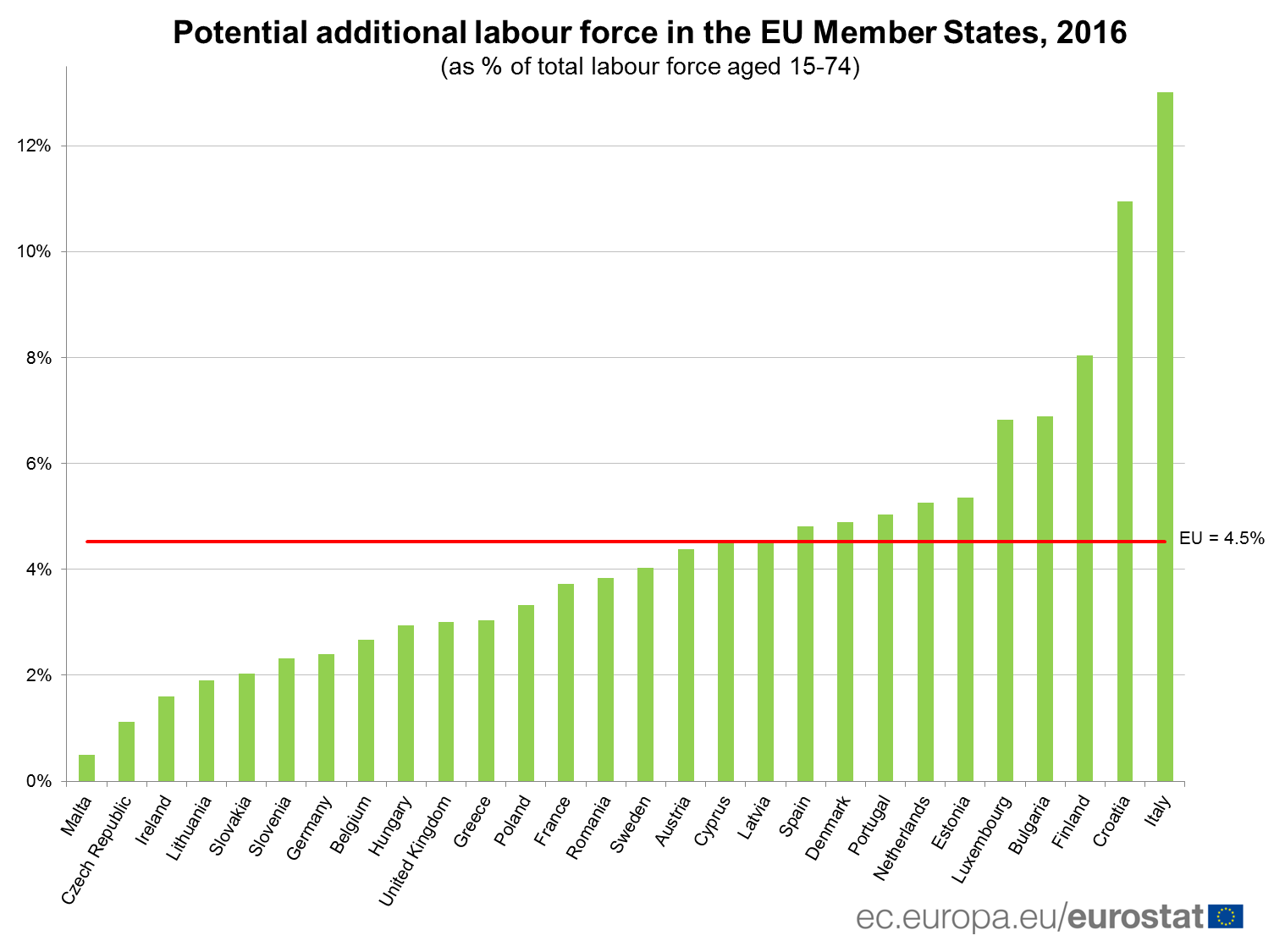Alongside the economically active population aged 15 to 74 (224 million employed and 21 million unemployed), in 2016 almost 11.1 million economically inactive persons aged 15-74 in the EU had a certain relationship to the labour market and could be considered as a potential additional labour force. This is the equivalent of 4.5% of the EU labour force.
Among those currently declared economically inactive, around 8.8 million were classified as available to work but not looking for work. This group includes such people as discouraged job seekers. Another group consists of nearly 2.3 million people who were seeking work but were not immediately available, such as students looking for a job to start after graduation. Women (55.9%) made up the majority of the total potential additional labour force in the EU.
Italy has largest potential additional labour force
The potential additional labour force also varied significantly between Member States, with the largest proportions registered in Italy (with more than 3.3 million persons, equivalent to 13.0% of the labour force) and Croatia (10.9%), ahead of Finland (8.0%), Bulgaria (6.9%) and Luxembourg (6.8%). It should be noted that in every EU Member State, the potential labour force consisted mainly of persons who were available to work but who were not seeking work. Women made up the largest part of the total potential additional labour force in the vast majority of EU Member States, except in Ireland, Bulgaria, Lithuania, Finland and Denmark.
The source dataset can be found here.
This information is complemented by an online article and an infographic on underemployment and potential additional labour force statistics.
For more information:
Eurostat website section dedicated to the EU Labour Force Survey (LFS).
Eurostat database on EU-LFS results.
Main concepts and definitions of the EU-LFS.
Eurostat news release 69/2017 of 25 April 2017 on Europe 2020 employment indicators.


